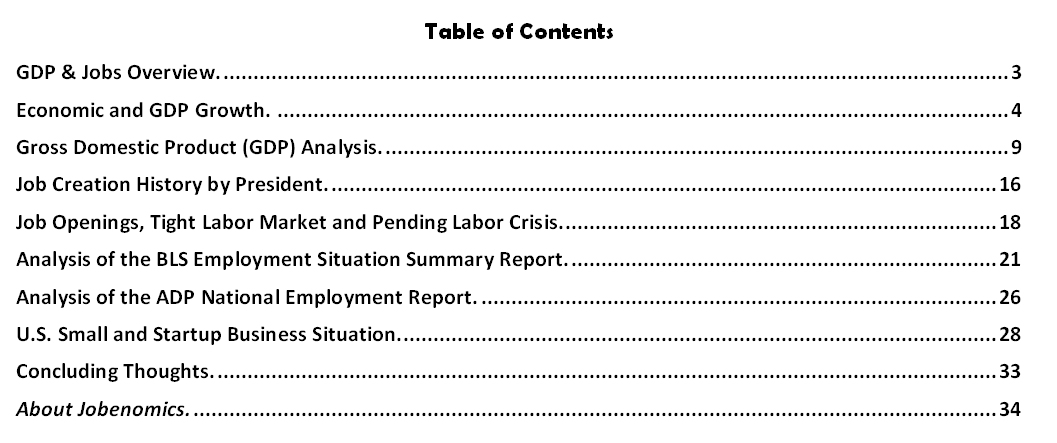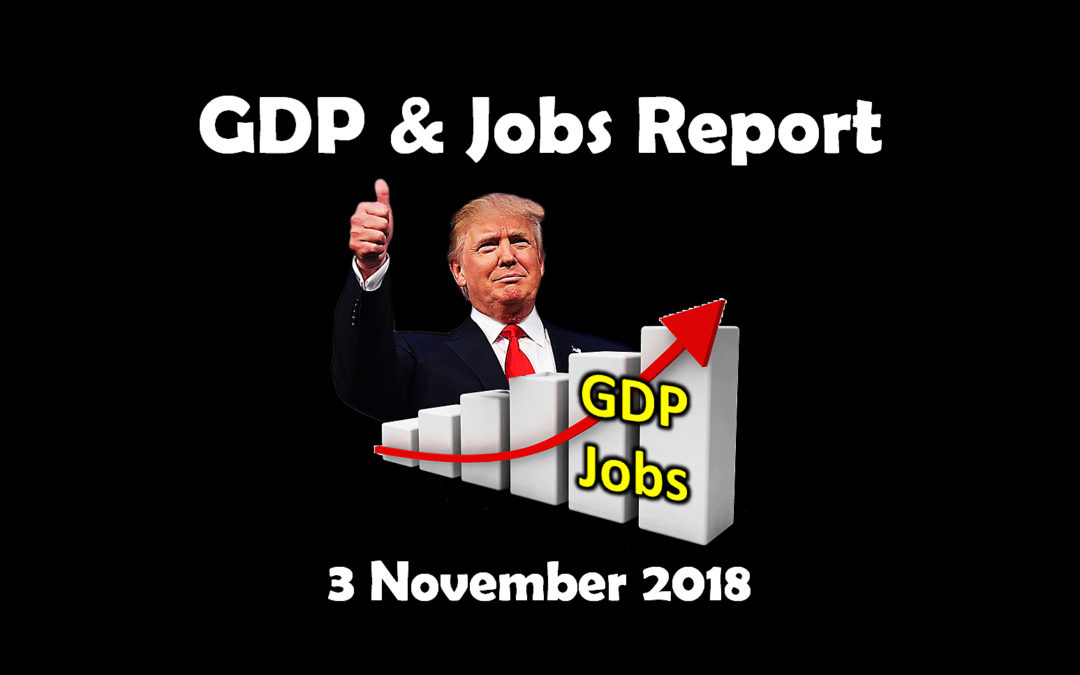The U.S. economy is growing briskly. The rate of GDP growth in 2018 is more than double the rate of GDP growth in 2016. October 2018 employment reports indicate strong employment gains, significant reductions of sidelined citizens rejoining the workforce and a nominal increase in the number of unemployed. October also marks the longest continuous job creation run (97-months) in U.S. history and the second longest period of recession-free months (112) in U.S. history. If the current period of economic expansion continues, the United States will upend the historical record of 119-months in June 2019—a little over 60% through President Trump’s first term in office.
Over the last 22-months, the Trump Administration averaged a solid level of job growth (196,000 of new jobs per month that added a total of 4,313,000 new jobs), reduced the number and rate of unemployed by 1,427,000 citizens and 3.7% (a level not seen since 1969), and reduced the Not-in-Labor-Force outflow of workforce departures to only 871,000 people. This reduction is a significant accomplishment in comparison to an order of magnitude larger exodus of workforce departures experienced by the two former Administrations.
From a labor force standpoint, the single biggest issue facing the Trump Administration is shrinking the enormous size (96 million) of citizens in the Not-in-Labor-Force—a cadre of nonworking citizens who are capable of work. Shrinking the Not-in-Labor-Force is even more important than creating new jobs. This huge number of sidelined citizens in the Not-in-Labor-Force is a major problem for a number of reasons.
The first reason is due to this cadre’s extremely large size. The Not-in-Labor-Force cadre now contains 75% as many people as the entire U.S. private sector workforce (95,877,000 versus 127,094,000).
Second, the BLS reports that only 5% of people in the Not-in-Labor-Force cadre currently “want a job.” The remaining 95% are living by other means including public/familial assistance, retirement income, student loans, or alternative lifestyles in the underground and illicit economies, all of which places a significant strain on taxpaying working Americans.
Lastly, the U.S. private sector now produces many more new jobs than they can fill due to a deficit of skilled labor. Many of these open positions could be filled by skilled personnel who reside in the Not-in-Labor-Force. Currently, 7.1 million open employment positions (the highest number in U.S. history) remain unfilled. To provide a pathway for sidelined citizens to reenter the labor force, the Administration needs to increase its attention on small business creation at the base of the American socio-economic pyramid.
Unfortunately, small, micro and startup businesses are faltering. From the October 2010 peak of 322,000 new jobs, small business (1-499 employees) job creation deteriorated by 61% to a paltry 125,000 new jobs in October 2018. In October 2018, U.S. micro-businesses (1-19 employees) produced only 7,000 new jobs, which equates to 92% of the jobs produced in February 2012. If the United States created startup firms at the same rate as in the 1980s, America could generate more than 200,000 companies and 1.8 million jobs each year.
The Administration is beginning to increase emphasis on the small business sector since the President’s policy, and regulatory reforms are taking root, and big business is making progress in re-shoring jobs. If the Administration puts as much energy on small business and workforce development as they are currently placing on big business and manufacturing, restoring the middle-class American dream could be President Trump’s greatest legacy—a legacy that could greatly help reunite today’s divided America.
Download this complete 34-page Monthly GDP & Jobs Report: November 2018 and visit the Jobenomics Library to review other similar reports, programs, and e-books on Jobenomics economic, community, small business, and workforce development efforts.



